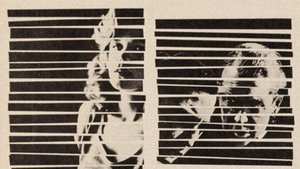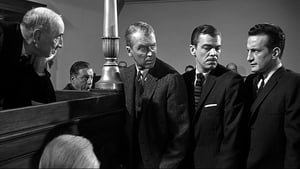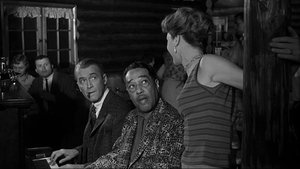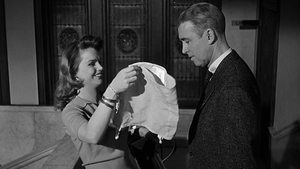Contact: [email protected]
Video Sources 0 Views
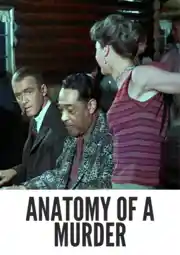
Synopsis
[ez-toc]





In the dynamic landscape of cinema, the debate surrounding the colorization of old movies is an ongoing dialogue that often pits tradition against modernization. Film enthusiasts find themselves at a crossroads, torn between preserving the authenticity of black-and-white classics and embracing the allure of colorized versions. In this extensive exploration, we delve into the heart of this debate through the prism of “Anatomy of a Murder Colorized 1959,” a cinematic gem that has not only captivated audiences with its gripping narrative but has also stirred controversy through its recent foray into the world of color.
Read Media File Transfer Agreement: Terms and Conditions
Read FAQ
Introduction
Before we immerse ourselves in the colorful controversy of “Anatomy of a Murder Colorized,” let’s take a moment to understand the broader context of colorized movies. The practice of colorizing old films involves the application of digital techniques to add color to originally black-and-white footage. This process has been met with both fascination and resistance in the film industry. While some argue that colorization breathes new life into classics, others vehemently defend the purity of the director’s original vision in black and white.
“Anatomy of a Murder Colorized,” directed by Otto Preminger, stands as a classic courtroom drama, a genre known for its riveting narratives and intense legal battles. Originally released in 1959, the film starred the iconic James Stewart as defense attorney Paul Biegler, Lee Remick as the enigmatic Laura Manion, and a stellar ensemble cast. Its significance in the annals of cinematic history is unquestionable, and its recent venture into colorization has sparked a fresh wave of discussion and debate.
The Making of “Anatomy of a Murder Colorized”
To understand the colorization controversy, we must first appreciate the original creation of “Anatomy of a Murder Colorized.” Directed by the enigmatic Otto Preminger, known for his daring and unconventional approach to filmmaking, the movie brought together a powerhouse cast led by the incomparable James Stewart and the alluring Lee Remick.
Otto Preminger’s meticulous direction was crucial in shaping the film’s success. The director, often considered ahead of his time, chose to tackle controversial subjects and push the boundaries of censorship in the 1950s. “Anatomy of a Murder Colorized” was no exception, as it navigated the complexities of a murder trial with a nuanced and daring approach.
James Stewart, already a Hollywood legend, delivered a performance that added another feather to his illustrious cap. His portrayal of defense attorney Paul Biegler was both charismatic and intense, capturing the essence of the character with remarkable authenticity. Lee Remick, in her role as Laura Manion, brought a palpable tension to the screen, complementing Stewart’s performance with her enigmatic presence.
Bringing a Novel to Life: The Storyline and Characters of “Anatomy of a Murder Colorized”
The film’s narrative is anchored in a compelling courtroom drama, adapted from the 1957 novel by Robert Traver, the pen name of John D. Voelker, a former Michigan Supreme Court justice. Set against the backdrop of the real-life Michigan Supreme Court, the movie delves into the trial of US Army Lieutenant Frederick Manion, accused of murdering a local innkeeper.
The intricate storytelling and character development are heightened by Duke Ellington’s iconic jazz score, an integral element that underscores the film’s atmosphere. Ellington’s music not only complements the suspenseful courtroom scenes but also adds a layer of sophistication and emotion to the narrative.
Capturing the Spirit of the 1950s: Visuals and Style
“Anatomy of a Murder Colorized” is not just a legal drama; it is a visual and stylistic reflection of the era in which it was created. The 1959 film captures the essence of the time, immersing viewers in the charm and tension of post-war America. The cinematography of the film, characterized by its visual aesthetics, skillfully incorporates elements of film noir to heighten the suspense and intrigue.
From the sharp contrasts of light and shadow to the use of stark, moody visuals, “Anatomy of a Murder Colorized” employs classic film noir elements to create a captivating atmosphere. The choice of black-and-white cinematography, which was standard for the time, enhances the timeless quality of the film.
The Trial Unveiled: Examining the Legal Drama in “Anatomy of a Murder Colorized”
As a legal drama, “Anatomy of a Murder Colorized” is a masterclass in the portrayal of the trial process and courtroom tactics. The film expertly navigates the intricate legal strategies employed by both the defense and the prosecution. It sheds light on the ethical dilemmas faced by attorneys, the dynamics between lawyers and their clients, and the moral complexities of the justice system.
One of the central themes of the film is the use of the insanity defense, a legal strategy that adds layers of complexity to the unfolding drama. The exploration of psychological and moral dimensions within the legal context elevates “Anatomy of a Murder” beyond a conventional courtroom drama, making it a thought-provoking exploration of justice and human nature.
Critical Acclaim and Controversies
Upon its release, “Anatomy of a Murder Colorized” received widespread critical acclaim, earning seven Academy Award nominations. James Stewart’s performance, in particular, garnered praise, earning him a nomination for Best Actor. The film also received nominations for Best Picture, Best Supporting Actor (Arthur O’Connell and George C. Scott), and Best Adapted Screenplay.
However, the acclaim was not without its fair share of controversies. The film’s explicit language and sexual references, considered daring for its time, sparked debates and discussions about societal norms. In navigating these controversial elements, “Anatomy of a Murder Colorized” left an indelible mark on the cinematic landscape, challenging conventions and pushing the boundaries of what was deemed acceptable in mainstream cinema.
The Significance of “Anatomy of a Murder Colorized” in Film History
Beyond its critical acclaim and controversies, “Anatomy of a Murder Colorized” holds a significant place in the history of cinema. Its influence on the evolution of courtroom dramas and legal thrillers is undeniable. The film’s daring approach to tackling complex and taboo subjects paved the way for future generations of filmmakers to explore the intricacies of the legal system on screen.
Columbia Pictures, the studio behind the film, boasts a rich catalogue of cinematic treasures, and “Anatomy of a Murder Colorized” stands out as a key work within that collection. Its enduring legacy is marked not only by its critical success but also by its impact on shaping the trajectory of legal dramas in the years that followed.
Preserving the Past: The Art of Colorizing Classic Movies
As the film industry progresses, the preservation of classic movies becomes a crucial undertaking. Film preservationists employ various techniques, one of which is colorization, to restore old films to their original palettes. The goal is to introduce these cinematic gems to new audiences while retaining the essence of the director’s vision.
The art of colorization involves a careful balance between maintaining the integrity of the original work and adapting it to contemporary viewing preferences. Sophisticated digital tools are employed to recreate the color spectrum in a manner that aligns with the intended aesthetic of the film. This meticulous process allows audiences to experience classic movies in a new light, with colors that resonate with modern sensibilities.
The Controversial Case of Colorizing “Anatomy of a Murder Colorized”
The decision to colorize “Anatomy of a Murder” was not without its challenges. The colorization process, when applied to a film with such a distinct visual style, demands a nuanced approach to ensure that the artistic integrity of the original work is preserved. The challenge lies in finding a balance that respects the director’s vision while providing audiences with a fresh and contemporary viewing experience.
The reception to the colorized edition of “Anatomy of a Murder” has been diverse, reflecting the broader debate within the film community. Purists argue for the sanctity of the black-and-white version, emphasizing the importance of preserving the original intent and visual style. On the other hand, proponents of colorization appreciate the opportunity to see classic films in a new and vibrant light, connecting with the material in a way that feels more relatable to contemporary audiences.
The controversy surrounding colorization underscores the ongoing tension between preservation and modernization in the realm of film restoration. As technology advances, filmmakers and preservationists grapple with the ethical considerations of altering the visual language of classic movies. The question becomes not just about colorizing a film but about striking a delicate balance that honors the director’s vision while making these cinematic treasures accessible to a new generation.
The Ongoing Debate: Balancing Preservation with Modernization in Film Restoration
The broader debate surrounding digital remastering, colorization, and other film restoration techniques extends beyond “Anatomy of a Murder.” It delves into the heart of the cinematic preservation movement and raises ethical considerations that challenge the industry to find a harmonious balance.
Digital remastering has become a common practice in the preservation of classic films. The process involves enhancing the quality of the original print, addressing issues such as scratches, fading, and sound degradation. While purists argue for the importance of preserving the film in its original form, proponents of remastering contend that these techniques breathe new life into old movies, allowing them to be experienced with the visual and auditory clarity that modern technology affords.
Ethical considerations play a pivotal role in the ongoing debate. Filmmakers and preservationists must grapple with questions of intent, authorship, and the impact of alterations on the overall viewing experience. While some argue that preserving the original artistic intent is paramount, others assert that introducing classic films to new audiences requires adapting to contemporary sensibilities.
Conclusion
In conclusion, “Anatomy of a Murder Colorized 1959” invites audiences to embark on a cinematic journey that transcends time. Whether viewed in its original black-and-white form or through the lens of colorization, the film remains a testament to the brilliance of courtroom drama classics. James Stewart’s exceptional performance, coupled with the film’s enduring themes, ensures its place in the annals of film history.
As we navigate the complexities of preserving the past and embracing modernization, let us appreciate the timeless allure of “Anatomy of a Murder” in all its colorful and monochromatic glory. Whether one leans towards the purity of the original vision or embraces the vibrancy of the colorized edition, the film’s impact on cinematic history is undeniable. It serves as a reminder that, in the ever-evolving world of cinema, the debate between tradition and innovation is as timeless as the stories told on the silver screen.


